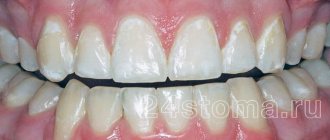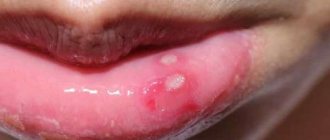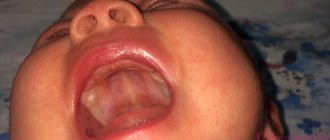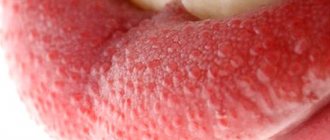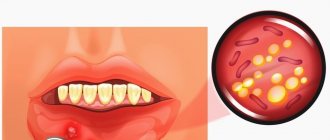Sometimes you can notice chalky-colored stains on your teeth. There can be many reasons for this. And they are all different. Chalky spots usually appear on those areas of the enamel where their mineralization is impaired.
If they are formed due to improper dental hygiene or stains occur due to an unbalanced diet, then such stains can be eliminated with the help of whitening pastes that do not contain fluoride. White spots may appear if tooth enamel begins to flake off.
The disease can develop on one tooth or affect the teeth of the entire dentition. Another cause of chalky spots is fluorosis, in which large amounts of fluoride compounds accumulate in the body.
The mechanism of the problem
The health of dental units is ensured by a number of substances: these are vitamins A, C, E, D, group B, potassium, iron, iodine, magnesium, zinc and others. But the two main elements necessary to maintain the functionality of the jaw are calcium and fluoride.
Due to injury, work in a toxic industry, insufficient hygiene, or the accumulation of pathogenic bacteria on the surface of the enamel, it can lose useful compounds, which is why white spots, dots or stripes appear on the teeth (we will consider the result with a photo below).
What does the pathology look like?
Initially, a very small speck is detected, which is difficult to notice with the naked eye. Over time, the focus of demineralization increases. The affected areas lose their natural shine because the crystalline structure of the substance covering the dentin is destroyed: it becomes porous, darkens and, due to a change in texture, turns into a reservoir for pathogenic microorganisms. At first, such microdestructions are painless, which indicates the need for visual control.
Most often, canines and incisors are affected, but sometimes pathology occurs on molars. It is important to notice it in time - the process is reversible with early diagnosis. If it is neglected, only radical methods of treatment will help (drilling, installing a large filling).
Causes of problems in adults
White spots on tooth enamel can have different etiologies. To make an accurate diagnosis, the doctor examines and interviews the patient: he clarifies how oral care is carried out, whether there were injuries or other prerequisites for the appearance of foci of remineralization.
Initial caries
Whitish matte formations may indicate that the pathological process has begun and will soon make itself felt. The main reason for its development is poor hygiene (a person brushes his or her teeth irregularly, not thoroughly enough, or does not floss). The disease can also be caused by an excess of carbohydrate foods in the diet, especially fast carbohydrates (white bread, sweets). The resulting plaque becomes a breeding ground for bacteria and a good “future reserve” for the formation of caries.
If you start therapy at this stage, you can get by with non-invasive procedures, but the neglected process will lead to the destruction of dentin and, as a consequence, to pulpitis (a diagram of pulp damage can be seen in the illustration).
Traumatic impact
It is not so easy to injure the jaw in everyday life, but there is an exception: often the cause of white spots and stains on the teeth is wearing braces and splints. After removal of the orthodontic structure, foci of demineralization are found on the enamel surface; their occurrence could be avoided by observing dietary restrictions and hygiene.
The root cause of lesions under braces is the accumulation of food debris (especially acidic and carbohydrate-rich foods). This is why doctors advise regularly using an irrigator after installing jaw retainers. The surface areas under the locks are poorly moistened with saliva, which aggravates the situation.
Patients who have not been treated by an orthodontist also have white spots on their teeth. They are associated with a constant load:
- frequent consumption of seeds, nuts and other solid foods;
- bruxism (involuntary clenching of the jaws both during sleep and while awake).
Athletes involved in contact martial arts are also at risk.
Industrial or occupational fluorosis
He can be:
- streaked or spotted (mild form);
- chalky-mottled (moderate severity);
- erosive and destructive (severe course of the disease).
It occurs due to excess fluoride in the patient’s body and also leads to the appearance of chalky or transparent spots, specks and stripes on the teeth. The disease manifests itself in people who have worked for a long time in industries with high fluoride concentrations:
- glass, ceramic, cement;
- woodworking;
- oil producing
Workers of hazardous enterprises are recommended to regularly visit the dentist to identify pathology in the early stages and undergo timely treatment.
Hypoplasia
Many dental diseases in an already born baby are a consequence of the incorrect lifestyle of the expectant mother, lack of vitamins, and poor ecology.
White spots on a child’s baby (less often permanent) teeth often occur due to underdevelopment of the enamel. The foundation for its formation in children is laid during the period of intrauterine development - at the 7th week of pregnancy. Permanent incisors and molars are formed from 5 months to 7–8 years.
The most popular prerequisites for the spread of pathology:
- hypovitaminosis D in the mother;
- toxicosis;
- transferred rubella;
- frequent inflammation of the gastrointestinal tract;
- birth injury.
The problem cannot be prevented with a 100% guarantee, but you can make every effort to reduce the likelihood of its occurrence.
Possible complications and consequences
Hypoplasia of tooth enamel without timely treatment contributes to the development of caries. An underdeveloped enamel layer does not protect dentin from the aggressive action of an acidic environment; the carious process quickly reaches the pulp and tooth root. Even in the absence of caries, teeth with thinned enamel and chips react with pain to cold, salty and sweet foods. Unpleasant yellow-brown spots disrupt the aesthetics of a smile. The enamel layer with a damaged structure quickly wears off and chips, and malocclusion develops.
What diseases cause white spots on teeth to appear in children?
There are several options here:
- Lack of vitamins or minerals - in this case, in addition to visiting the dentist, it is worth visiting the pediatrician to take tests, prescribe medications or adjust the diet.
- Endemic fluorosis - most often occurs in babies living in industrial areas due to excessive saturation of drinking water with fluorides, if the expectant mother works in hazardous industries during pregnancy. In addition to medical intervention, you should, if possible, reconsider your lifestyle and eliminate the use of fluoridating pastes (they are not recommended for children under 4–5 years of age).
- The hypoplasia described above is a common cause of white spots found on dental photographs.
- Hardly started caries is the most common option.
The pathological process, which can develop in an adult for several years, in the case of a child often occurs rapidly and leads first to darkening of the stripes on the enamel, and then to the formation of large carious cavities. If the situation is neglected, the crown will collapse completely, leaving behind only a small black “hole” in place of the element. In addition to physiological reasons, this also occurs due to the difficulty of carrying out hygiene procedures, especially since older relatives often treat the baby with sweets (soda, sweets, fine flour bread). To avoid complications, it is recommended to visit the dentist with your child every 2-3 months.
Excess or lack of fluoride
Fluoride is an element important for teeth, which largely enters the human body with water. It is also found in toothpastes, some foods and polluted air. Excessive intake of fluoride provokes the development of a disease called fluorosis, one of the symptoms of which is white or yellow spots on the enamel. They are often subtle and are identified when visiting a doctor. The coloring of defects may be uneven.
Baby teeth are more susceptible to disease. The appearance of permanent ones reduces the risk of developing fluorosis. Children with chronic diseases and weakened immunity are also at risk.
Fluoride deficiency is also harmful to teeth. In this case, they become vulnerable, which causes tooth decay and gum disease.
The occurrence of pathology during the gestational period
Pregnancy is stress for the body and a time during which a woman requires an increased concentration of nutrients in food. The fetus needs minerals and vitamins for the correct formation of all systems and organs, so the expectant mother may experience a deficiency of them. It happens that foci of demineralization occur as a result of toxicosis, when, due to constant nausea, an overly acidic environment is created in the mouth.
If a white spot appears on a pregnant woman’s tooth, this means that it is worth visiting not only a dentist, but also a gynecologist to rule out metabolic disorders and alleviate unpleasant symptoms.
Enamel hypoplasia
We are talking about severe thinning, partial or complete absence of enamel. Hypoplasia is a disease that manifests itself not only in the form of whitish spots, but also grooves and depressions on the tooth surface. It can be triggered by various factors:
- infectious diseases during pregnancy;
- Rh conflict between mother and fetus;
- premature birth;
- birth injury;
- taking certain illicit drugs by a pregnant woman;
- disturbances in the functioning of the endocrine, nervous systems or gastrointestinal tract.
The pathology is accompanied by increased sensitivity of teeth to irritants and caries.
Main symptoms of diseases
The signs of lesions vary, and the prognosis in the absence of timely medical intervention is also different. The final diagnosis should be made only by the attending physician, but the patient can, based on the nature of the pathological process, make an assumption about the root of the problem.
- If the enamel is injured, the person most likely knows about it - he recently removed braces or the jaw was mechanically damaged. Only the area on which pressure was applied or the part of the tissue hidden under the orthodontic structure is treated.
- If a child or adult has white spots on the front teeth (incisors) and molars, the reason is often the development of caries. Such neoplasms are localized randomly, but quickly progress, turn black, and deepen. The focus of the disease is single or few.
- With fluorosis, chalky or pale yellow stripes appear, which later darken.
- Hypoplasia is diagnosed in children and adolescents - and neighboring elements usually suffer.
Diagnostics
During the first visit, the doctor will conduct an examination and, if necessary, prescribe additional studies to clarify the cause of the appearance of white or dark spots on the molars and baby teeth.
- If spots are noticed in a child, then information about the course of pregnancy is collected - hypoplasia should be excluded.
- Drying the tooth surface allows you to detect the onset of caries. After drying, the enamel on the damaged area becomes matte. The use of magnifying microscopes makes it possible to detect minor damage - cracks, scratches.
X-rays or a tomogram may be ordered.
Methods of treating pathology for initial caries
Inflammation at the initial stage is treated without the use of a drill and anesthesia: this is a painless manipulation that prevents damage to dentin, and the enamel can be considered healthy after treatment. In some cases, only the doctor at the appointment sees white spots on the teeth, so it is better to carry out these procedures immediately after identifying the problem.
Remineralization
Remotherapy is the process of artificially saturating tissues with micro- and macroelements. It is also indicated after prolonged use of splints or braces.
Calcium gluconate is most commonly used by dentists. A swab soaked in the solution is applied to the previously cleaned and disinfected jaw and left for exposure for several minutes. Sometimes the procedure requires repetition.
To ensure long-lasting results:
- brush your teeth with a soft brush and low-abrasive toothpaste;
- exclude too cold and hot, spicy, sour foods for a day or two.
Fluoridation
There is significantly more calcium in bone tissue than fluoride. But the latter plays a decisive role in the process of absorption of calcium compounds. The best results are obtained by alternating saturation procedures.
The doctor performs the operation manually using gel, varnish or tampons containing the desired element. After manipulation, it is not recommended to use medicinal pastes for 2 months.
Electrophoresis, infiltration, ozonation
These are more complex, but nevertheless non-invasive or micro-invasive processes that allow you to restore enamel that is beginning to decompose without pain relief using:
- microcurrents delivering the necessary substances (electrophoresis with calcium or fluorine ions);
- ICON lamps, thanks to them the desired material penetrates the pores of the surface, restoring the enamel layer (infiltration);
- gas that disinfects the entire dentition, ridding it of pathogens, followed by the use of a material that prevents the development of caries (ozonation).
The attending physician will offer the patient several options to choose from, and the final decision on what to do if white spots appear on the teeth is made jointly.
Sealing and silvering of enamel in children
Fissures are depressions and grooves on the chewing surfaces, thanks to which the jaws can grind food efficiently. Despite their usefulness, with insufficient care they become a source of inflammation and proliferation of microbes, especially in children who, due to their age, do not yet fully observe hygiene. Considering the fragility of the tissues of a child’s body, this leads to almost instantaneous development of caries. Sealing (filling) is done with a material similar to a filling material.
After manipulation, dentists recommend a coating - for example, with silver nitrate, a bactericide, which prevents further destruction of the units and keeps the oral cavity sanitized.
Treatment methods for caries in the spot stage
Since the main cause of stains is demineralization of the enamel, treatment of caries at an early stage is carried out using a conservative method without the need to drill the tooth.
Professional treatment of initial caries
After diagnosing caries in the stain stage, it is very important to carry out adequate treatment and prevent complete tooth destruction. At an appointment with a specialist, treatment of caries in the spot stage can be carried out in different ways:
- remineralization;
- Borovsky-Leus method;
- gel applications;
- fluoridation.
The essence of the treatment is to saturate the damaged areas with calcium and fluoride using special professional preparations.
In general, the treatment process in the dentist’s office is carried out in the following order:
- professional teeth cleaning to remove plaque and stones;
- washing and drying;
- application of specialized preparations depending on the chosen method;
- consultations on further dental care;
- monitoring the further condition of the teeth;
- preventive actions.
After treatment for “white caries,” you should contact your dentist no later than 2-3 months. The specialist will evaluate the effectiveness of treatment and the quality of the patient’s oral hygiene.
Treating white spots at home
Not only in the dental clinic is treatment of caries in the spot stage carried out; a course of therapy is also possible at home. Just first you need to consult a dentist and, if necessary, have your teeth professionally cleaned.
For home treatment you can use:
- remineralizing gel, for example, ROCS Medical Mineral. The composition is enriched with magnesium, calcium and other microelements that penetrate tooth enamel, remove stains and restore its natural shine;
- special toothpastes with a healing effect. ROCS Medical and Elmex cope well with such problems;
- fluoride gel remineralizes white spots and prevents the destruction of the enamel coating of teeth.
Along with professional remedies at home, you can also use traditional medicine recipes:
- Finely chop the pumpkin tail. Pour boiling water and leave for an hour. Rinse your mouth with the solution several times a day;
- Chew a piece of dried calamus daily for 5-7 minutes. The number of days depends on the size of the spot.
Both in the case of medications and folk remedies, treatment of caries in the spot stage is aimed at enriching the enamel with useful elements and minerals.
Therapy and restoration work for hypoplasia
For minor lesions, remineralization can be done; in complex situations, more serious intervention will be required. The problem is rarely localized to the molars and premolars. More often, incisors and canines are underdeveloped. Restoring the enamel in this case is impossible, and the only way out is aesthetic restoration. Depending on the degree of tooth decay, a veneer, crown or filling is placed on it, restoring color and shape.
You will learn in detail how you can restore the beauty of your smile using ceramics from the video:
How can a specialist help?
To determine the cause of the problem, you need to contact your dentist. He will conduct a visual examination, assess the size of the spots, the degree of enamel destruction, and the number of teeth involved in the painful process. In the initial stages of caries, remineralization and fluoridation help. If the disease has affected the deeper structures of the tooth, you cannot do without using a drill and filling.
If whitish spots occur while wearing braces or other orthodontic construction, a comprehensive approach is taken to solving the problem:
- treat caries;
- carry out disinfection;
- replace corrective devices with new ones;
- carry out professional cleaning to remove plaque.
In some cases, the help of highly specialized specialists may be needed (if the doctor rules out dental pathologies).
Preventing the appearance of white spots
If a person is already an adult, it is too late to prevent hypoplasia, but the development of other pathologies can be avoided. To do this you should:
- brush your mouth twice a day, floss after meals, use a medium-hard brush or soft, low-abrasive paste;
- undergo a preventive examination at the dentist 2 times a year, following all recommendations;
- eat well (eat enough vegetables and dairy products);
- in case of confirmed deficiency of nutrients (only in consultation with the doctor), use vitamin and mineral complexes.
